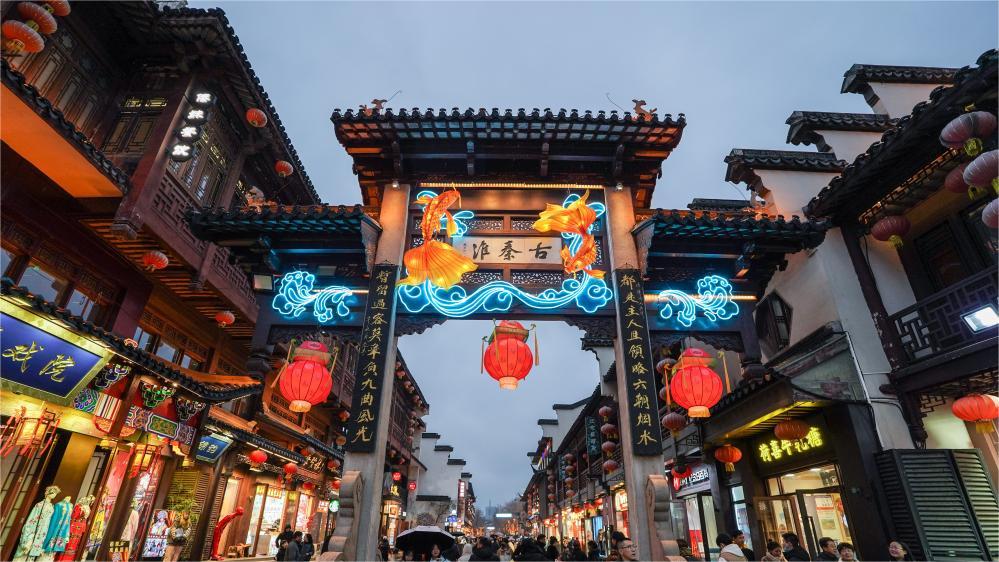Beijing-Tianjin-Hebei region's coordinated development fosters growth momentum
TIANJIN, Feb. 5 (Xinhua) -- Wuqing Railway Station, which is along the Beijing-Tianjin Intercity Railway and located between the urban areas of Beijing and Tianjin, serves as a window into the coordinated development of the Beijing-Tianjin-Hebei region.
Yao Bing, head of Wuqing Railway Station, has been working at the station for 13 years. Over the years, he has witnessed the growth of the station and the changes that the Beijing-Tianjin Intercity Railway has brought to Wuqing and its neighboring areas.
"When I first came to work here, Wuqing Station only handled some 3,000 passengers per day, while nowadays we serve about 8,000 to 9000 passengers per day," said Yao.
In 2014, a national strategy was proposed for the coordinated development of the Beijing-Tianjin-Hebei region. Since then, the strategy has seen progress including an improved transportation system, robust infrastructure, and enhanced technology innovations across the region, among others.
With a more rational industrial layout, the Beijing-Tianjin-Hebei region's gross domestic product (GDP) reached 10.4 trillion yuan (about 1.46 trillion U.S. dollars) in 2023, according to the Beijing Municipal Bureau of Statistics.
Beijing Carale Robot Technology Co., Ltd. was established in the Chinese capital in 2014 and moved its factory and research and development center to the neighboring municipality of Tianjin in 2017, with the business flourishing since then.
"All thanks to the policy support from the Tianjin Binhai-Zhongguancun Science Park," the company's founder Yin Li said. The park, established in November 2016 in the Tianjin Binhai New Area, has now become the city's scientific and technological innovation heartland.
The park has not only inherited the innovative spirit of Zhongguancun, the country's first national high-tech industrial development zone, but it can also take advantage of Tianjin's strong manufacturing base. It was a big move towards linking the industrial layouts of the two municipalities.
The same story is unfolding in the Xiong'an New Area, Hebei Province. In April 2017, China announced plans to establish the area, which spans the Rongcheng, Anxin, and Xiongxian counties and some adjacent areas.
Some 100 km away from Beijing, the new area is easily accessible by car or train. The ride by high-speed train from Beijing takes less than an hour.
A key move to advance the coordinated development of the Beijing-Tianjin-Hebei region, Xiong'an has been designed as a major recipient of functions transferred from Beijing that are not essential to its role as China's capital.
The country has also vowed to build Xiong'an, dubbed the "city of the future," into an innovative, green, smart and world-class city with blue skies, fresh air and clean water, in line with the country's high-quality development path.
In less than seven years, Xiong'an has been transformed from a blueprint into reality, with over 3,000 buildings rising from the previously barren lowlands and shabby villages. Furthermore, the centrally-administered state-owned enterprises have set up more than 200 subsidiaries and various branches in the area.
Looking ahead, the Beijing-Tianjin-Hebei region's industrial development is expected to be more closely linked to provide a solid industrial foundation for building the Beijing-Tianjin-Hebei regional city cluster.
Photos
Related Stories
- People taste sweet fruits of Beijing-Tianjin-Hebei coordinated development
- Revived flood-hit regions all geared-up for winter
- 2,508 fuel-cell vehicles in Beijing-Tianjin-Hebei region issued number plates
- Beijing-Tianjin-Hebei region sees foreign trade growth in Jan-Aug
- Beijing-Tianjin-Hebei region forms new growth driver through coordinated development
Copyright © 2024 People's Daily Online. All Rights Reserved.









